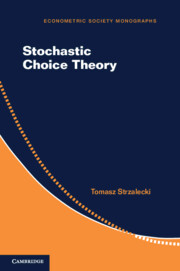Refine search
Actions for selected content:
88 results
Collaborative Archaeology, Public Parks, and the Importance of Chronology at Ocmulgee Mounds National Historical Park
-
- Journal:
- American Antiquity , First View
- Published online by Cambridge University Press:
- 19 December 2025, pp. 1-24
-
- Article
-
- You have access
- Open access
- HTML
- Export citation
Little Bangs on the Tombigbee: Chronologies of Emergence
-
- Journal:
- American Antiquity , First View
- Published online by Cambridge University Press:
- 10 December 2025, pp. 1-20
-
- Article
-
- You have access
- Open access
- HTML
- Export citation
Human presence in the Salapunku area (Machu Picchu, Cusco, Peru) based on recent radiocarbon evidence
-
- Journal:
- Radiocarbon , First View
- Published online by Cambridge University Press:
- 19 November 2025, pp. 1-16
-
- Article
- Export citation
Judgements about loyalty: A noise audit in the context of Swedish protective security vetting
-
- Journal:
- Judgment and Decision Making / Volume 20 / 2025
- Published online by Cambridge University Press:
- 17 November 2025, e44
-
- Article
-
- You have access
- Open access
- HTML
- Export citation
The Interval Consensus Model: Aggregating Continuous Bounded Interval Responses
-
- Journal:
- Psychometrika ,
- Published online by Cambridge University Press:
- 04 November 2025, pp. 1-24
-
- Article
-
- You have access
- Open access
- HTML
- Export citation
Bilingual effects on cognitive control: Are we looking in the right place?
-
- Journal:
- Bilingualism: Language and Cognition , First View
- Published online by Cambridge University Press:
- 22 September 2025, pp. 1-14
-
- Article
-
- You have access
- Open access
- HTML
- Export citation
The Birnirk to Thule Transition as Viewed from Radiocarbon and Tree-Ring Dating within Two Adjacent Houses at Cape Espenberg, Northwest Alaska
-
- Journal:
- American Antiquity , First View
- Published online by Cambridge University Press:
- 28 August 2025, pp. 1-20
-
- Article
-
- You have access
- Open access
- HTML
- Export citation
A multivariate spatiotemporal model for county-level mortality data in the contiguous United States
-
- Journal:
- Annals of Actuarial Science , First View
- Published online by Cambridge University Press:
- 11 August 2025, pp. 1-20
-
- Article
-
- You have access
- Open access
- HTML
- Export citation
AMS 14C dating of an Ancestral Maya boomtown: Bayesian analysis of settlement development, occupation, and abandonment in East-Central Belize
-
- Journal:
- Radiocarbon / Volume 67 / Issue 4 / August 2025
- Published online by Cambridge University Press:
- 02 September 2025, pp. 741-782
- Print publication:
- August 2025
-
- Article
-
- You have access
- Open access
- HTML
- Export citation
Unfolding the Network of Peer Grades: A Latent Variable Approach
-
- Journal:
- Psychometrika / Volume 90 / Issue 3 / June 2025
- Published online by Cambridge University Press:
- 16 June 2025, pp. 1153-1174
-
- Article
-
- You have access
- Open access
- HTML
- Export citation
Radiocarbon Database Offers New Perspectives on Ancient Oaxaca
-
- Journal:
- Latin American Antiquity / Volume 36 / Issue 2 / June 2025
- Published online by Cambridge University Press:
- 04 August 2025, pp. 461-478
- Print publication:
- June 2025
-
- Article
-
- You have access
- Open access
- HTML
- Export citation
Major life events as drivers of perceived linguistic change across adulthood
-
- Journal:
- Language Variation and Change / Volume 37 / Issue 1 / March 2025
- Published online by Cambridge University Press:
- 18 February 2025, pp. 87-110
-
- Article
-
- You have access
- Open access
- HTML
- Export citation
No time to die: Radiocarbon chronology of the funerary monument of El Amarejo 1 and burial practices during the Bronze Age in the Southern Meseta, Spain
-
- Journal:
- Radiocarbon / Volume 67 / Issue 2 / April 2025
- Published online by Cambridge University Press:
- 21 January 2025, pp. 275-296
- Print publication:
- April 2025
-
- Article
-
- You have access
- Open access
- HTML
- Export citation

Stochastic Choice Theory
-
- Published online:
- 14 January 2025
- Print publication:
- 23 January 2025
Using Response Times to Model Not-Reached Items due to Time Limits
-
- Journal:
- Psychometrika / Volume 84 / Issue 3 / September 2019
- Published online by Cambridge University Press:
- 01 January 2025, pp. 892-920
-
- Article
- Export citation
Farmers with a Taste for Fish: New Insights into Iroquoian Foodways at the Dawson Site
-
- Journal:
- American Antiquity / Volume 90 / Issue 1 / January 2025
- Published online by Cambridge University Press:
- 06 February 2025, pp. 157-173
- Print publication:
- January 2025
-
- Article
-
- You have access
- Open access
- HTML
- Export citation
Factor Analysis and AIC
-
- Journal:
- Psychometrika / Volume 52 / Issue 3 / September 1987
- Published online by Cambridge University Press:
- 01 January 2025, pp. 317-332
-
- Article
- Export citation
The timing and mode of southern Andean human migrations
-
- Journal:
- Radiocarbon / Volume 67 / Issue 5 / October 2025
- Published online by Cambridge University Press:
- 18 September 2024, pp. 890-901
- Print publication:
- October 2025
-
- Article
-
- You have access
- Open access
- HTML
- Export citation
You might want to tone down your advice: An experimental investigation of the speech act of advice in French
-
- Journal:
- Applied Psycholinguistics / Volume 45 / Issue 4 / July 2024
- Published online by Cambridge University Press:
- 27 August 2024, pp. 567-590
-
- Article
- Export citation
A high-precision radiocarbon chronology of Inka rule in the Upper Loa River Region of northern Chile
-
- Journal:
- Radiocarbon / Volume 66 / Issue 4 / August 2024
- Published online by Cambridge University Press:
- 14 October 2024, pp. 676-698
- Print publication:
- August 2024
-
- Article
-
- You have access
- Open access
- HTML
- Export citation
